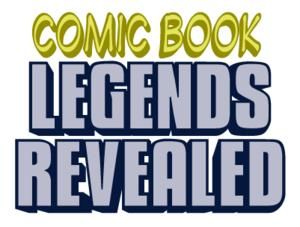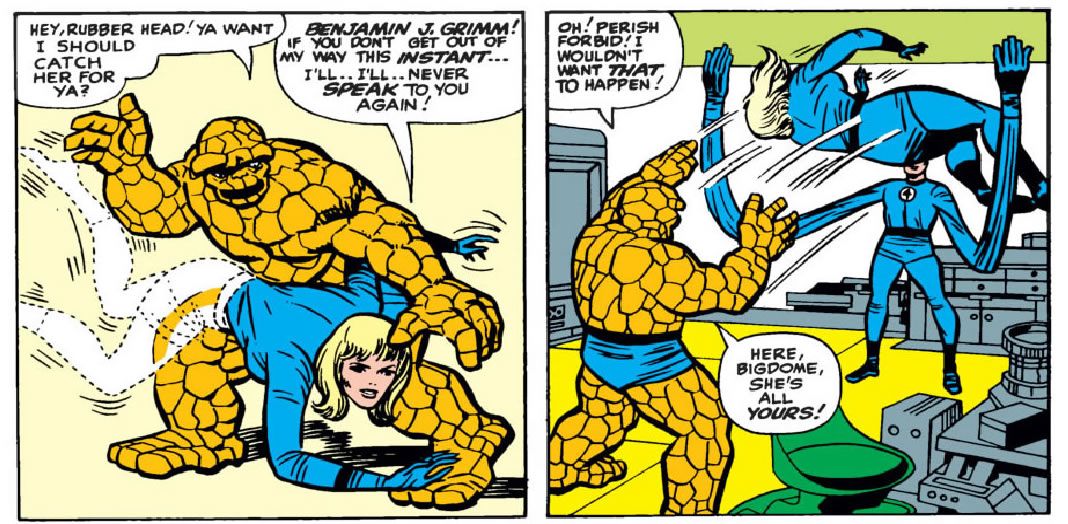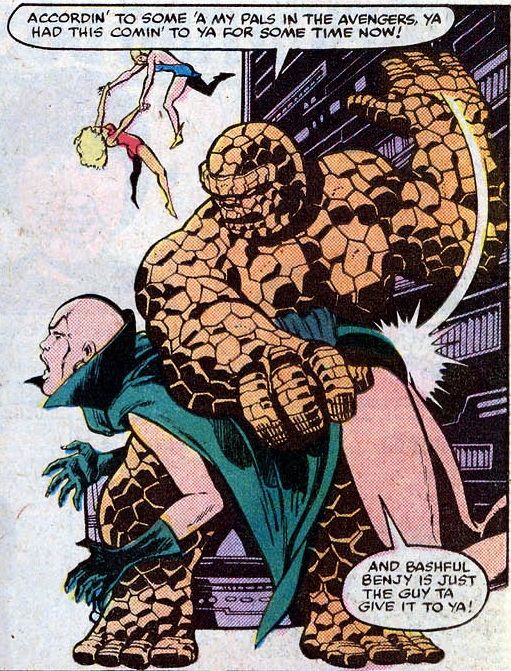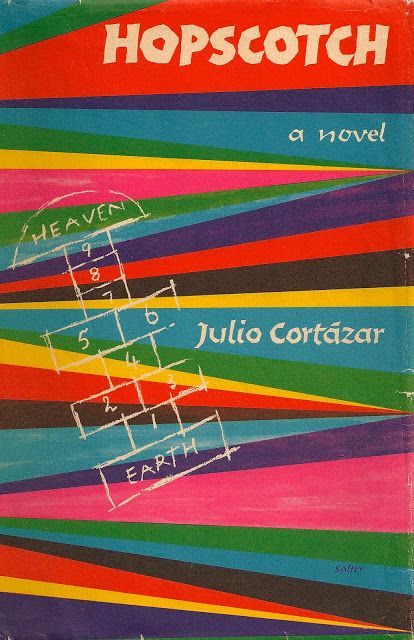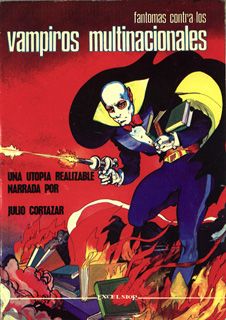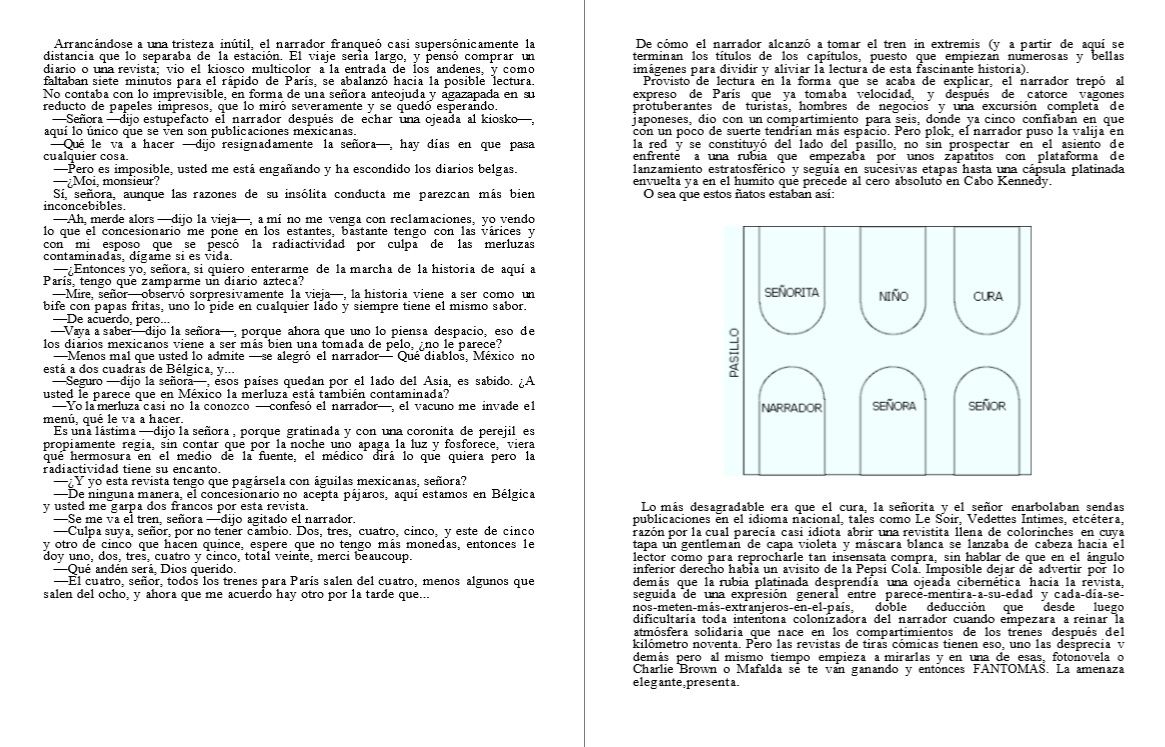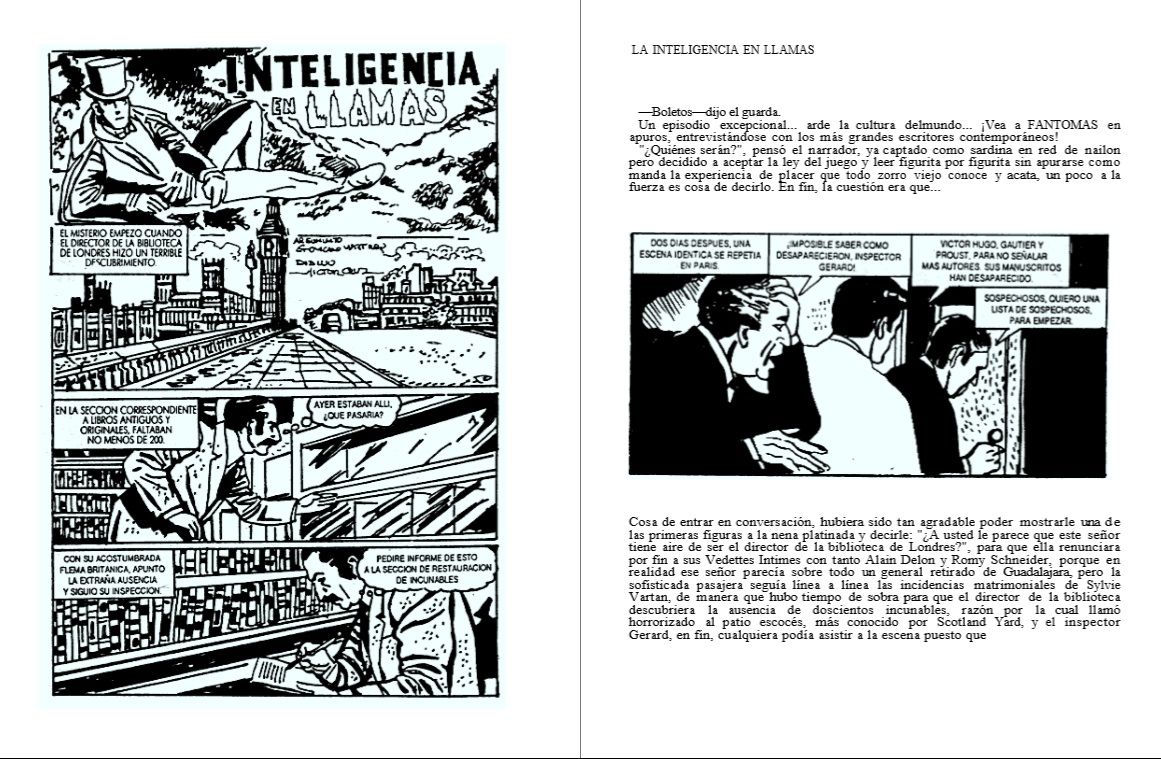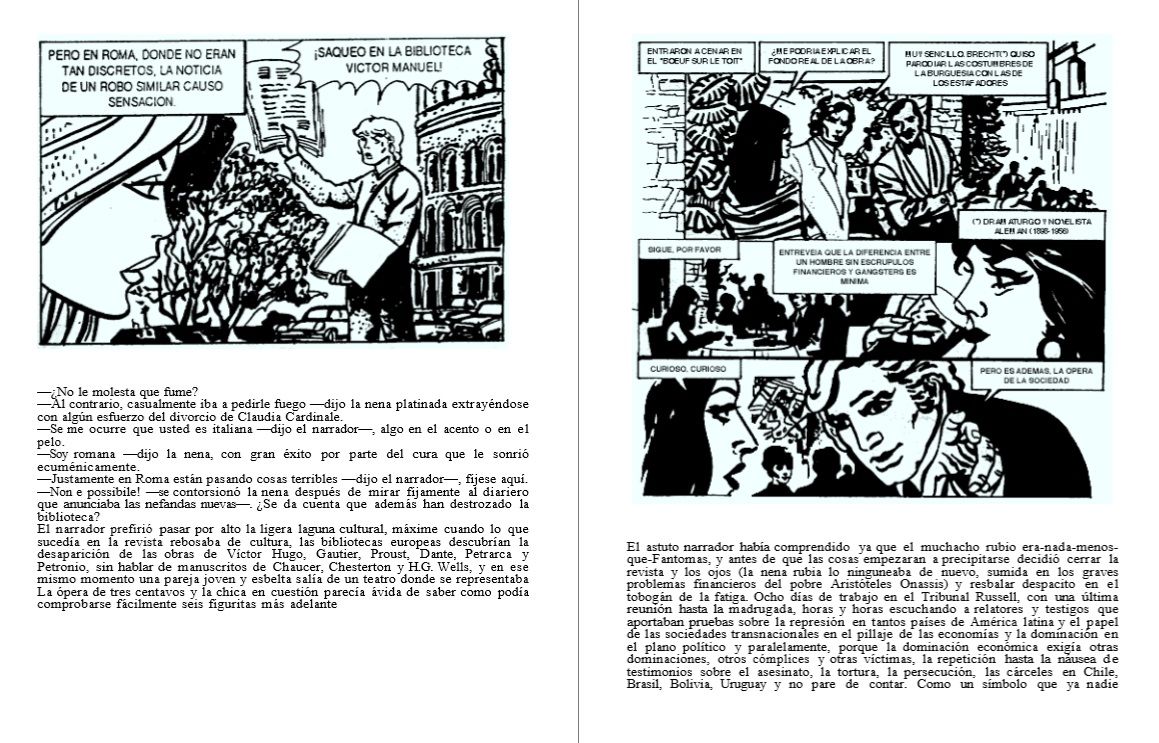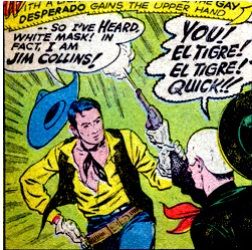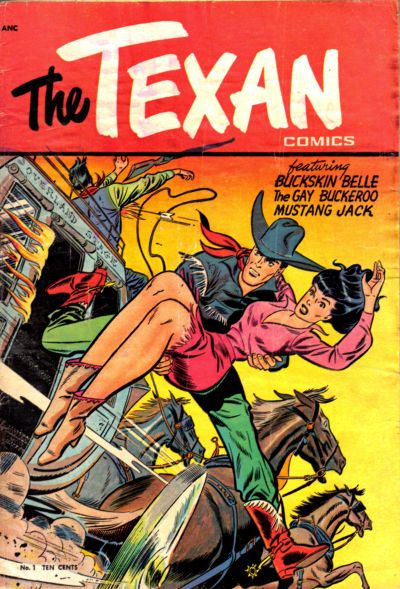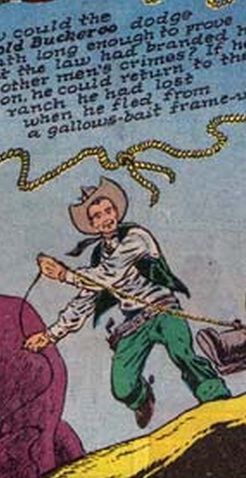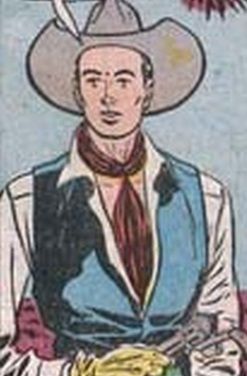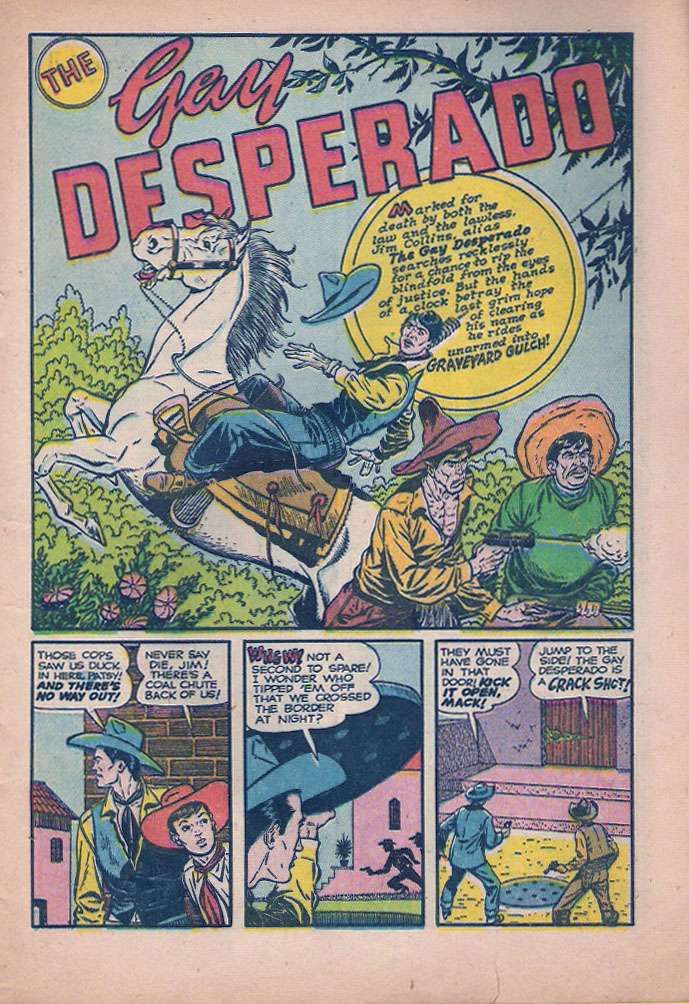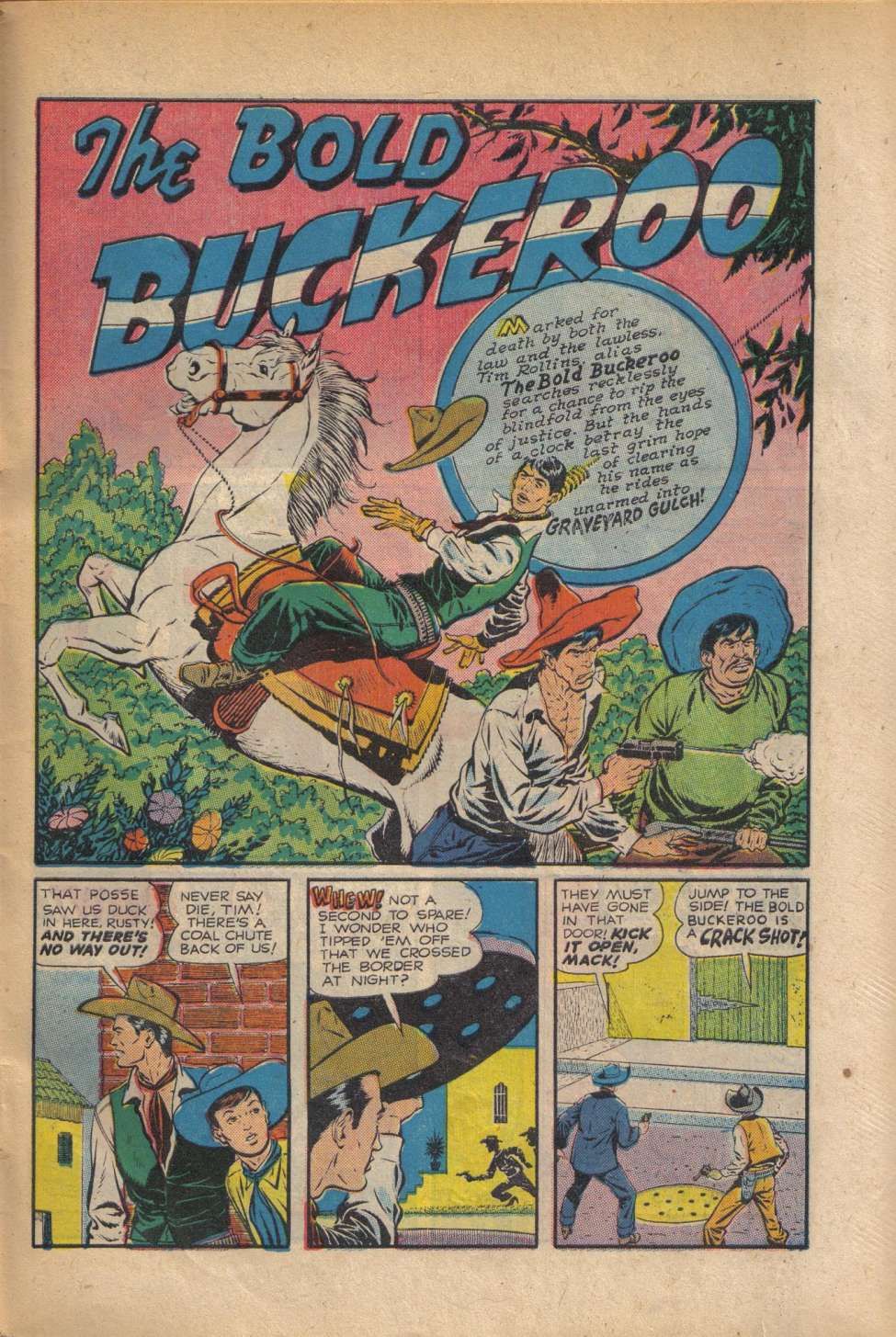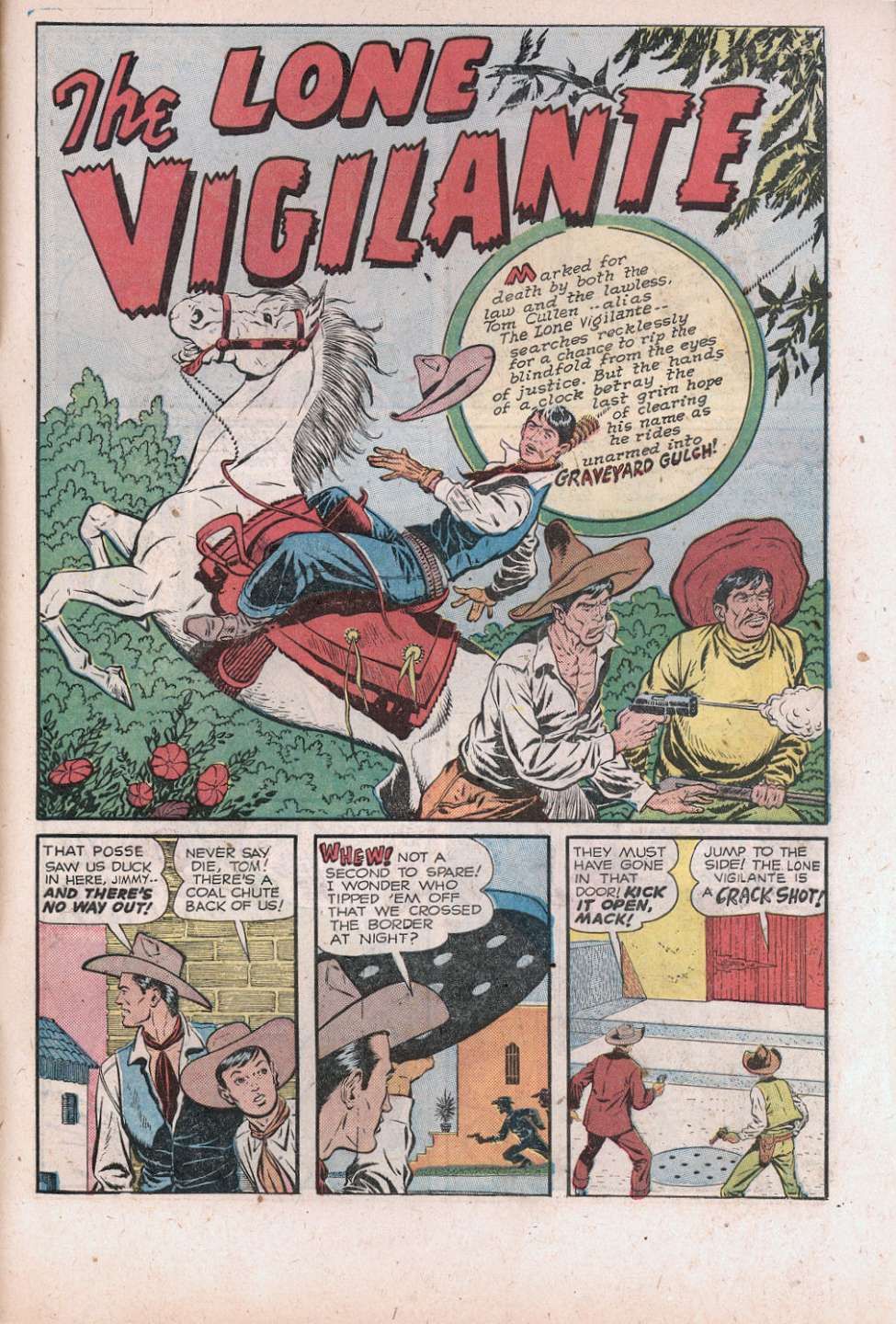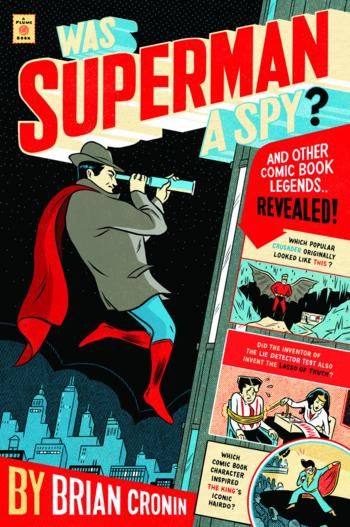Welcome to the four hundred and twenty-eighth in a series of examinations of comic book legends and whether they are true or false. Click here for an archive of the previous four hundred and twenty-seven. This week, how did the Comics Code save Sue Storm from a spanking? Plus, did famed Argentinian novelist Julio Cortázar really write a Fantomas comic? Finally, who the heck is the Gay Desperado and what does he have to do with the Bold Buckaroo and the Lone Vigilante?
Let's begin!
NOTE: The column is on three pages, a page for each legend. There's a little "next" button on the top of the page and the bottom of the page to take you to the next page (and you can navigate between each page by just clicking on the little 1, 2 and 3 on the top and the bottom, as well).
COMIC LEGEND: The Comics Code made Stan Lee and Jack Kirby edit a panel where the Thing threatens to spank the Invisible Girl.
STATUS: I'm Going with True
Last week, in my feature spotlighting comic book trends, I did a bit on superhero spankings.
Reader Bret S. then wrote in to send me a link to the following piece at a comic book spanking fan site.
In it, they make a convincing case that this was, indeed, intended to be a panel of the Thing threatening to spank the Invisible Girl.
Note how the lettering is JUST off on "catch"? It looks like Sue's dialogue has also been slightly altered. In fact, there's even a decent case to be made that the Thing's right arm has been erased and re-drawn. The lettering, though, looks pretty darn evident that something was changed. "Ya want I should spank her for ya?" fits perfectly into the sentence AND the posing of the characters.
How hilarious is that?
I showed it to Tom Brevoort and he agreed that this just had to be an example of the Comics Code saying, "Hey, yeah, you can't do that" and making Marvel change it. I was already pretty much convinced, but Tom's agreement cinched the deal for me.
Thanks to Bret S. for the link, thanks to Tom Brevoort for making me feel more confident about going "true" for this (as really, there is no other way to prove it nearly fifty years later) and thanks to the "Chicago Spanking Review" for their great detective work!
And don't feel bad for ol' Ben Grimm. He had the opportunity to make up for lost time in a 1980 issue of Marvel Two-in-One...
Check out some Entertainment and Sports Urban Legends Revealed!
Was A Hard Day’s Night Filmed in Black and White to Save Money?
Was Willy Wonka and the Chocolate Factory Really Just a Big Ad for Candy?
Were a Group of Ivy League Schools Taking Nude Photos of Their Students for Decades?
Was One of the Main Characters in Alien Nation Originally Going to be Named George Jetson?
On the next page, did famed Argentinian author Julio Cortázar write a Fantomas comic books?
COMIC LEGEND: Argentinian author Julio Cortázar wrote a comic book featuring Fantomas.
STATUS: Basically False
Noted Argentinian author Julio Cortázar (famous for his role in the so-called "Latin American Boom" of the 1960s and 1970s, when writers like Gabriel García Márquez and Cortázar gained much critical acclaim) was well-known for how experimental he was a as a novelist. His most famous novel, Hopskotch, is notable for the way that it deconstructs the very structure of a novel (it has multiple endings and you can literally "hop" around the plot in the book and create your own unique story from choosing which chapters to read in what order)...
In 1975, Cortázar (who lived from 1914-1984) wrote a novella titled Fantomas contra los vampiros multinacionales (Fantomas versus the multinational vampires)...
where he depicts a character based on himself (even NAMED Julio Cortázar) who daydreams that he is the famed Fantomas (a popular pulp novel, film and comic book character in Europe and Central and South America - also the influence for Fantomex, as explained in this old Comic Book Legends Revealed). The daydreams are shown as an actual comic book story intermixed with the novel...
Here are a few sample pages...
As you can see, it is not exactly a comic book but it is pretty damn close.
However, the pages are not original to the work, but rather are examples of Cortázar using fair use (and likely skirting the edges of the definition of that term) to illustrate his story.
The artwork was done by artists from a popular Mexican comic book company, Editorial Novaro, for their very popular (throughout all of Central and South America) comic book series starring Fantomas.
So Cortázar did not ACTUALLY write a Fantomas comic book, but rather appropriated a Fantomas comic book for a fascinating mixed media story. Check out this site has a full copy of the story.
Thanks to Juan D. for correcting an earlier edition of the legend when I was misinformed that Cortázar actually wrote the comic in question.
Check out some classic Comic Book Legends Revealed related to OTHER famous authors and whether they wrote comic books!
Did Patricia Highsmith, author of The Talented Mister Ripley, write comics?
Did John "North and South" Jakes write comics?
Did Mickey Spillane write comics?
On the next page, who or what is the Gay Desperado and what does he have to do with the Bold Buckaroo and the Lone Vigilante?
COMIC LEGEND: Another Golden Age comic book character had the same story edited into three separate comic stories featuring three different characters.
STATUS: True
A couple of weeks back, we featured the story of how a Lady Satan adventure during the Golden Age was just slightly edited and then re-used with two different heroines taking the place of Lady Satan.
Reader Kamino Neko noted another amusing example of this comic book...regurgitation.
The Gay Desperado was a character created by George Tuska for Chesler comics in 1946. He made a few appearances, mostly in Red Seal Comics.
The Desperado was a crimefighter who was, himself, wanted for a crime he did not commit.
Two years later, St. Johns picked up the character and made him one of the characters in their series The Texan...
Only now he was the Bold Buckaroo...
(Note that the cover still called him the Gay Buckaroo).
Just SIX ISSUES LATER, St. John decided to test the theory that little kids did not collect comics past a few months by then reprinting the same stories they had featured in the first issues of The Texan (themselves just re-colored and edited Gay Desperado stories) as the Lone Vigilante.
Here are some exact examples of the re-colored artwork.
First off, 1946's Red Seal Comics #15...
Then 1948's The Texan #1...
And finally, later in 1950's The Texan #9...
So awesome.
Thanks, Kamino! If anyone else knows of other Golden Age trifectas like this, drop me a line at bcronin@comicbookresources.com!
Check out the latest edition of my weekly Movie/TV Legends Revealed Column at Spinoff Online: a href="https://spinoff.comicbookresources.com/2013/07/17/movie-legends-revealed-the-strange-tale-of-how-scarface-beat-the-x-rating/">How did Scarface avoid an X rating and was there a Director's Cut of the film that we were never allowed to see?
Okay, that's it for this week!
Thanks to the Grand Comics Database for this week's covers! And thanks to Brandon Hanvey for the Comic Book Legends Revealed logo!
Feel free (heck, I implore you!) to write in with your suggestions for future installments! My e-mail address is cronb01@aol.com. And my Twitter feed is http://twitter.com/brian_cronin, so you can ask me legends there, as well!
Here's my new book, Why Does Batman Carry Shark Repellent? The cover is by Kevin Hopgood (the fellow who designed War Machine's armor).
If you want to order a copy, ordering it here
gives me a referral fee.
Follow Comics Should Be Good on Twitter and on Facebook (also, feel free to share Comic Book Legends Revealed on our Facebook page!). Not only will you get updates when new blog posts show up on both Twitter and Facebook, but you'll get original content from me, as well!
Also, be sure to check out my website, Urban Legends Revealed, where I look into urban legends about the worlds of entertainment and sports, which you can find here, at urbanlegendsrevealed.com.
Here's my book of Comic Book Legends (130 legends - half of them are re-worked classic legends I've featured on the blog and half of them are legends never published on the blog!).
The cover is by artist Mickey Duzyj. He did a great job on it...(click to enlarge)...
If you'd like to order it, you can use the following code if you'd like to send me a bit of a referral fee...
Was Superman a Spy?: And Other Comic Book Legends Revealed
See you all next week!

